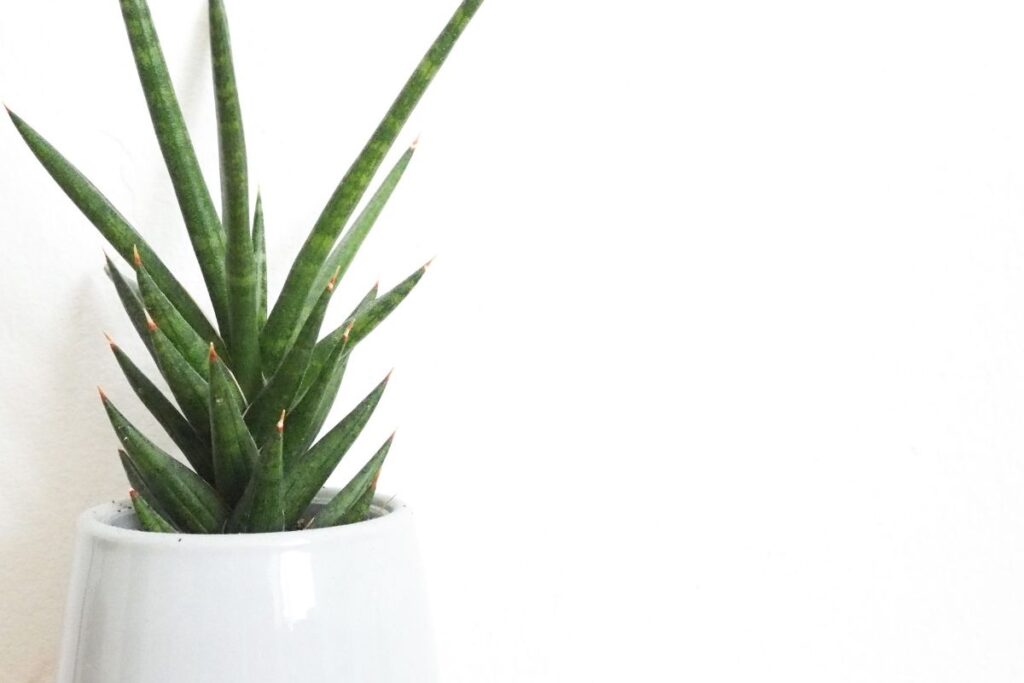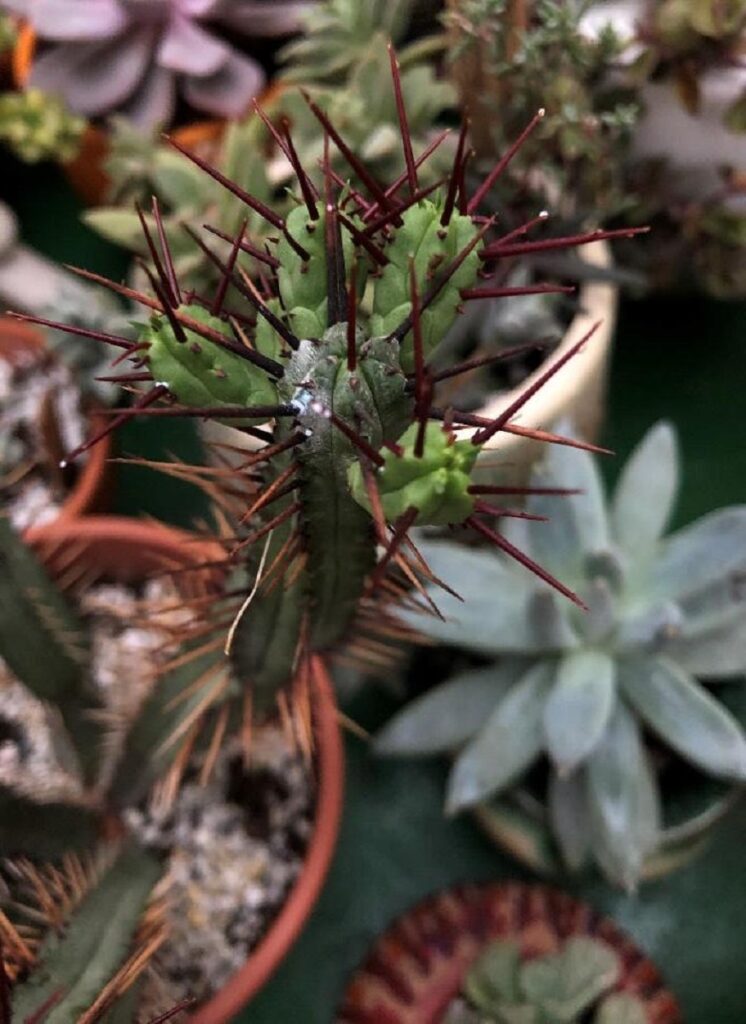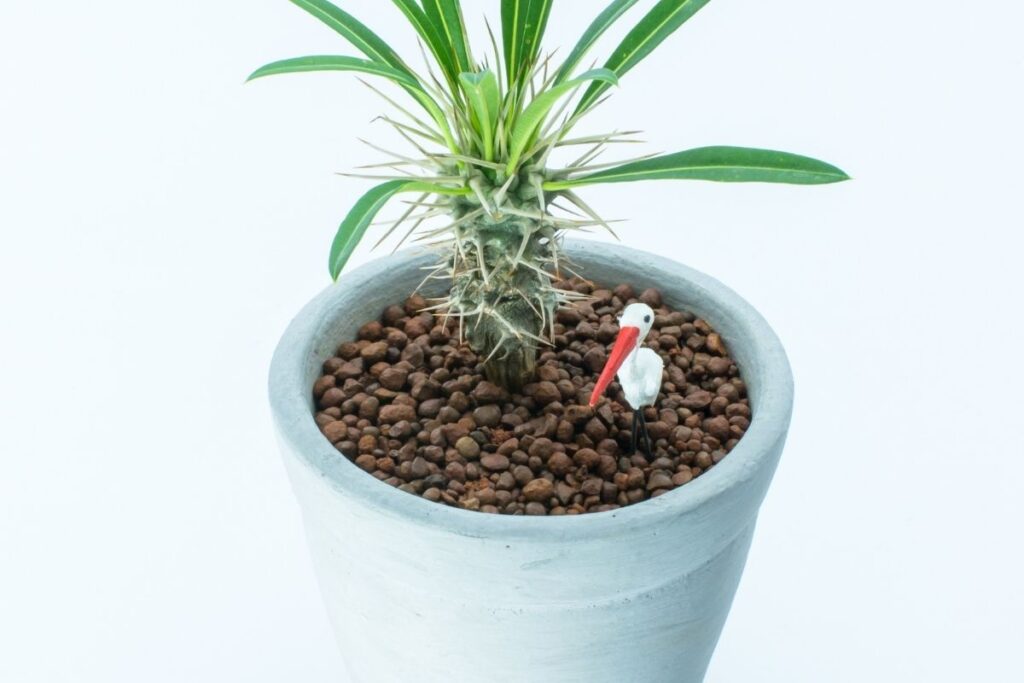Nowadays, growing succulents have become very popular. Their vivid colors, drought-tolerant characteristics and low maintenance needs make them wanted. In this article, let’s answer the question are succulents poisonous to cats.
Most succulents are non-toxic to people and pets, but some species may create problems if eaten by your four-leg friend.

That is why every pet owner should be aware of the dangerous succulent species for cats and dogs.
Are succulents poisonous to cats?
Each plant has different chemical ingredients causing various toxicity symptoms.
Knowing this all should not scare you out. This article listed all toxic succulent plants and tips on keeping your pet healthy around them.
How is it possible for these gorgeous plants to be toxic, and what substances are poisonous enough to harm your furry roommate on four legs? Now you probably wonder how these beautiful plants can be harmful to cats and dogs.
What Toxic Substance Can Harm Your Furry Roommate On Four Legs?
Succulents produce metabolites used to protect them from the dangerous environment (predators)
Yet, their metabolism usually creates chemicals that might be dangerous to your furry friends if ingested.
We created a list of popular succulents toxic to pets to make you feel free to have a small garden at home.
Succulent Genus Toxic To Your Cat/Dog
1. Adenium

Toxic parts – Adenium genus has fantastic plants with beautiful flowers. However, species are down on the list of toxic succulents because of the poisonous sap in plant organs. Growing these indoor plants is dangerous because, if consumed may be hazardous and lethal, even for big animals such as elephants.
Licking or eating even small amounts may activate irreversible changes in the body with abnormal heart rhythm and spasms.
The toxicity comes from the cardiac glycosides and steroids that affect the heart muscle.
Severe symptoms show after a day to three days from exposure. You will notice vomiting, salivation, abdominal pain, and gastrointestinal upset.
Poisonous species: Adenium obesum (Desert rose)
2. Agave

Toxic parts – All plant new enthusiasts buy this plant without knowing it has toxins present in the sap inside every plant part.
Thus, consuming even small amounts can harm or irritate your small animals.
Oxalates content in the sap leads to mild stomach symptoms, swelling throat, allergies, lethargy.
The poisoning symptoms are mild and generally last no longer than 24 hours.
Poisonous species: Agave Americana, Agave lechuguilla
RELATED: Find Out How to Choose the Right Succulent Pot (Easy Guide with Tips)
3. Albuca

Toxic parts – Species with tree-like appearance with poisonous bulbs and flowers.
After consuming even small amounts of these organs sometimes might cause changes in blood chemistry or brain damage.
Some species also have calcium oxalate, which causes mild irritation even by touching the plant.
Poisonous species: Albuca bracteata (Pregnant onion, Ornithogalum bracteolatum), Albuca Spiralis
4. Aloe

Toxic parts – The use of Aloe plants in the human population is prevalent because of their healing properties. Unfortunately, their leaves pulp contains benzene toxins that are toxic for dogs and cats. Besides, all aloe vera species have aloin (anthraquinone with laxative properties), causing digestive problems.
Poisonous species: Aloe vera, Aloe ballyi, Aloe elata, and Aloe ruspoliana.
5. Crassula

Toxic parts – Jade plants are generally the most reported animal poison control centers. These tolerate neglect considered toxic succulents contain potentially dangerous chemicals causing mouth irritation, lethargy, vomiting, diarrhea, nausea after ingestion.
Since jade poisoning is not lethal, it belongs to the list of succulents causing mild toxicity.
Poisonous species: Crassula ovata (Money tree, Money plant, Jade plant, Lucky plant), Crassula ovata Gollum, C.Arborescens (Silver Jade Plant).
6. Cotyledon

Toxic parts – All succulents within this genus contain cardiac glycosides that can cause cardiovascular problems, vomiting, lethargy, ataxia or depression.
Poisonous species: Cotyledon orbiculata, Cotyledon Pendens (Cliff cotyledon).
7. Curio

Toxic parts – This poisonous to cats and dogs plant belongs has toxic sap inside organs tissue.
After your pet ingests this succulent, the deadly combination of Pyrrolizidine alkaloids may lead to liver failure and inhibiting cell division.
Minor toxicity includes skin irritation, vomiting, diarrhea and other severe symptoms.
Poisonous species: Curio repens – Blue Chalkstick
8. Euphorbia

Toxic parts – Euphorbia or milk plants have white latex sap in all plant organs. This milky sap contains poisonous substances that can lead to skin irritation, allergies or even more severe symptoms if consumed in massive amounts.
Poisonous species: Euphorbia Mili, Euphorbia Tiruncalli (Pencil tree plant, Pencil tree, Pencil cactus, Firestick), E.Trigona, E.lactea, E.enopla.
RELATED: Let There Be Light! How Much Light Your Succulents Need To Grow
9. Kalanchoe

Toxic parts – All species from this genus are adapted to various conditions. The presence of bufadienolides cardiac glycosides makes them poisonous succulents to pets. In the human population, they have shown Anti-tumor promoting Activity (Bioscience, Biotechnology, and Biochemistry, Volume 65, 2001 – Issue 4), but the toxic steroid initiates gastrointestinal irritation after ingestion by animals.
Another substance that makes these succulents poisonous is the insoluble calcium oxalate crystals, resulting in acute pain of the back of the throat, oral irritation, mild stomach upset, hypersalivation, vomiting, lips or tongue edema, anorexia. In addition, calcium oxalate stones cannot dissolve, showing up as excess in the urine.
Small amounts of the plant material are not deadly, but increased dosage leads to collapse, poisoning and tachycardia.
Commonly known species from this Kalanchoe genus are the Mother in law plant and Kalanchoe tomentosa, which are present in almost every local nursery or plant shop.
Poisonous species: K.daigremontiana (Mexican hat plant, Alligator plant, Devil’s backbone), K.thyrsiflora (Flapjack), K.tomentosa (Panda plant), K.delagoensis (Chandelier plant).
10. Pachypodium

Toxic parts – Not a large genus of unusual appearance plants where most species are poisonous to animals. The sap is poisonous, causing diarrhea, vomiting, appetite loss, irregular heart function, and weakness after ingestion.
Because of the cardiac glycosides, people used this sap to create weapons (poisonous arrow sticks) for hunting in the past.
Poisonous species: Pachypodium lamerei (Madagascar palm)
11. Portulaca

Toxic parts – All plants from this genus are common succulents with smooth leaves poisonous to pets because of oxalates.
These common plants are winter resistant and easy to care for but can cause many problems if your pet walks freely in your yard.
After getting in the pet’s mouth, Mild poisoning symptoms are diarrhea, vomiting, lethargy, weakness, appetite loss, urine blood, and problems with the kidneys.
Poisonous species: Portulaca grandiflora (Purslane)
12. Sanseveria

Toxic parts – This decorative plant, known as the snake plant, is an indoor succulent with leaves that contains saponins affecting your pet’s digestive system, causing stomach pain, vomiting, diarrhea, salivation, and appetite loss.
Poisonous species: Sansevieria trifasciata (Snake plant, Mother in Law’s Tongue)
13. Senecio

Toxic parts- If your new plant is from the Senecio genus, keep in mind that it has hugely poisonous characteristics and is not pet-friendly at all.
In addition, these plants inside all organs have pyrrolizidine alkaloids poisonous to cats and dogs.
Leading to complications in liver function, this plant can be a reason for many health problems. Common symptoms after ingestion are dullness, constipation, weakness, pain.
Death may occur suddenly or after a coma state. That is why we suggest calling your local veterinarian immediately after realizing your pet ingested this plant.
Poisonous species: S.Rowleyanus(String of Pearls), S. Herreianus(String of Tears), S.radicans (String of Bananas), S.peregrinus (String of Dolphins), Senecio Vitalis (Mermaid Tail).
RELATED: Succulents: Growing Indoors and Top 7 Shops To Buy Them Online
How To Keep Poisonous Plants Around My Pets?

After you have had the chance to read the list of popular toxic succulents, it is time to explain how to prevent your pets when having poisonous plants around the home.
As pet owners, we all know that our dogs and cats sometimes get bored or curious about things around them and might start biting or eating parts of our plants.
Since we want to avoid poisoning, it is essential to keep your plants in a safe unreachable place in your home, and we are suggesting a high shelf where only we can reach them to satisfy their needs.
Here Is How To Keep Your Pet Far From Danger
- Don’t forget to write down the names of the plants you are buying.
- Search for potential toxicity of all the plants you have home or buying.
- Keep your plants on shelves where your pet cannot touch them.
- Buy your pet toys so they can have something to play with instead of getting bored and playing with dangerous things around your home.
Early Signs That Your Pet Has Eaten A Toxic Plant, And What To Do?
Usually, after a cat or dog eats poisonous succulents, you can see some changes in their behavior or, more often, health disruption. Therefore, it is better to find out as soon as your pet friend bites the plant because early intervention can save a life.
Follow these instructions to prevent a severe problem by keeping your pet under control until medical help arrives or until you bring it to the local veterinarian:
1. If you notice different behavior than usual, check for symptoms listed per plant.
2. When confirming poisoning symptoms, immediately search for medical help
4. Call ASPCA Animal Poison Control Center on this number (888) 426-4435
5. If you have seen any of your plants chewed, write down the name of the damaged plant. If it is unknown to you, make sure to take a branch to the veterinarian for poisonous identification.
6. Meanwhile, give your pet plenty of water and 3-4 charcoal pills to prevent quick poisoning.
7. If you found vomit, take a sample of it in a clean bag and bring it to the hospital for external investigation.
After all, you have read, we assume you might be a little scared about plant care.
Yet, we encourage you to continue being a plant parent, and we prepared a list of non-toxic safe for your best four-leg friend.
CHECK IT OUT!
Non-Toxic Succulents Genus
- Adromischus
- Aeonium
- Astrophytum
- Delosperma
- Dudleya
- Echeveria
- Faucaria
- Gasteria
- Graptopetalum
- Haworthia
- Lithops
- Pachyphytum
- Peperomia
- Pleiospilos
- Portulacaria
- Rhipsalis
- Rosularia
- Schlumbergera (Christmas cactus)
- Sedum
- Sempervivum
- Stapelia
- Tillandsia (air plant)
Editor’s Recommendations
Soaking The Soil: How Often You Should Water Your Succulents
19 Heart Touching and Joyful Korean Succulents for Gardens
30 Vibrant Types of Red Succulents for Indoor and Outdoor Gardens







